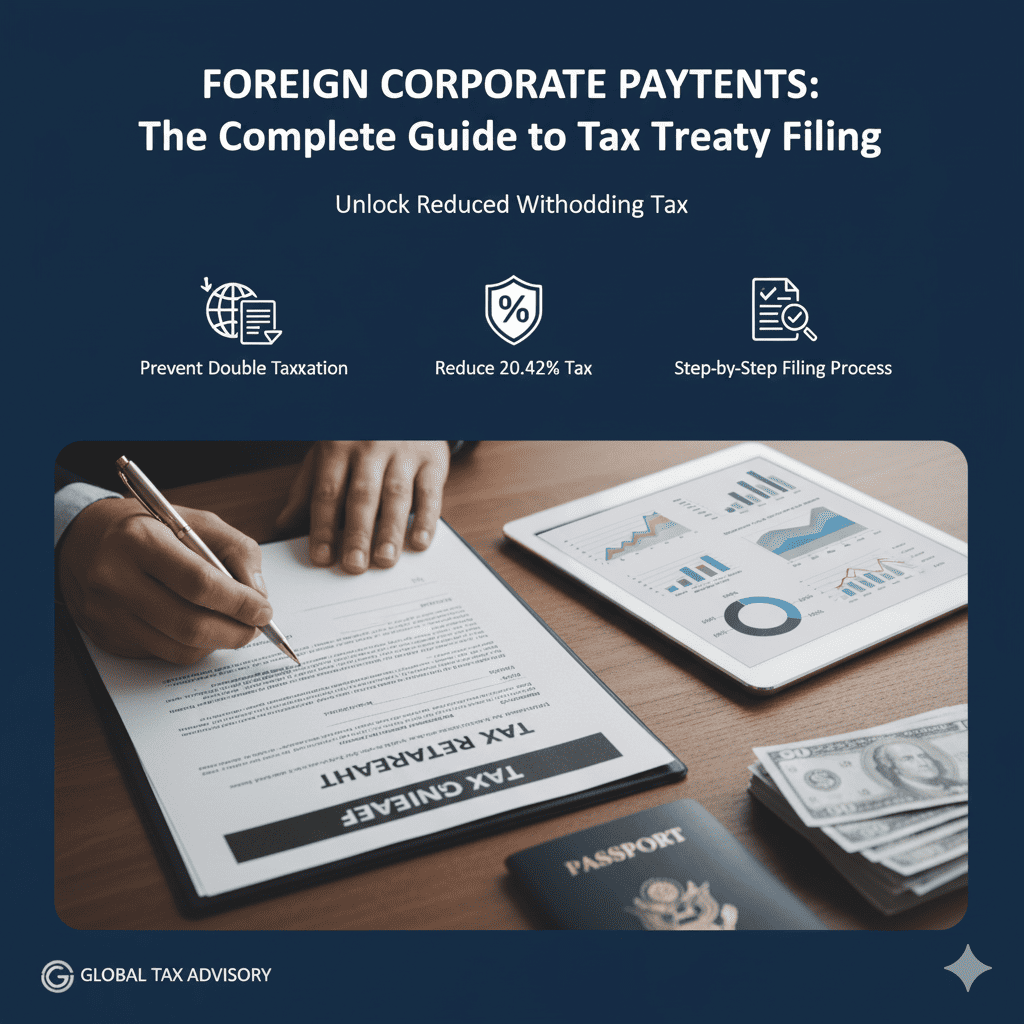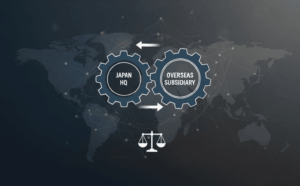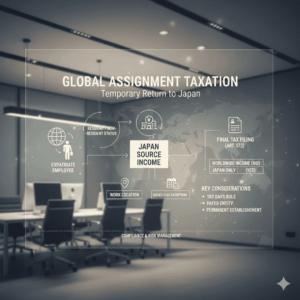Tax Treaty Applications for Payments to Foreign Corporations
When making payments of dividends, interest, or royalties to foreign corporations, failure to follow proper procedures can result in a high withholding tax rate of 20.42%. By correctly applying tax treaties, this tax rate can be significantly reduced or even completely exempted in some cases. However, incorrect procedures can lead to additional taxation and penalty charges, making accurate knowledge essential.
This article provides clear explanations of important points that practitioners should know, from basic tax treaty concepts to specific notification submission procedures.
Understanding Tax Treaties: Basic Concepts
A tax treaty is an international agreement on taxation matters concluded between countries. The most important purpose is to “prevent international double taxation.”
Let’s look at a specific example. When a U.S. company receives dividends from a Japanese company, without any agreement, withholding tax would be imposed in Japan, and additional tax might also be imposed in the United States. This is double taxation. Tax treaties exist to prevent such unreasonable double taxation.
Japan currently has tax treaties with approximately 70 countries and regions, including the United States, United Kingdom, Germany, Singapore, and Hong Kong. Since the content of each treaty differs by country, specific reduced tax rates must be confirmed individually.
By applying tax treaties, the usual withholding tax rate of 20.42% can be significantly reduced. For example, under the Japan-U.S. tax treaty, dividends are subject to 5% or 10%, while interest is completely exempt (0%).
Basic Mechanism of the Withholding Tax System
Withholding tax is a system where the payer deducts tax from income at the time of payment and pays it to the government on behalf of the recipient. This system also applies to payments to foreign corporations.
The basic process is as follows: First, a Japanese company (payer) pays income to a foreign corporation (recipient). At that time, the payer deducts tax from the income (withholding) and remits the deducted tax to the tax office.
Main types of income subject to withholding include dividends (stock dividends), interest (loan interest, bond interest), royalties (patent rights, trademark rights, copyright royalties), and service fees (technical guidance fees, consulting fees, etc.).
When tax treaties are not applied, these incomes are generally subject to withholding tax of 20.42% (income tax 20% + special reconstruction income tax 0.42%).
Notification Submission Procedures for Tax Treaty Application
To receive reductions or exemptions under tax treaties, it is necessary to submit a “Notification Concerning Tax Treaties” in advance. This procedure is primarily carried out by the Japanese payer (withholding agent).
Notification forms differ depending on the payment content. Main forms include reduction/exemption for dividends (Form 1), reduction/exemption for interest (Form 2), and reduction/exemption for royalties (Form 3). Foreign corporations must create notification forms for each payer and submit them through the payer to the tax office with jurisdiction over the payer’s tax domicile by the day before the first payment date.
Depending on the counterpart country, required supporting documents include a “Certificate of Residence” issued by the tax authority of the counterpart country. This is an important document proving that the recipient is a tax resident of that country, and one issued within one year must be used.
Since April 2021, when certain requirements are met, these documents can also be provided by electronic means (such as PDF format image data). This has improved procedural efficiency.
Concept of Beneficial Owner and Important Considerations
One of the most important and complex concepts in tax treaty application is “Beneficial Owner.” This is the idea that one must not only have the legal right to receive income but must also be the person who truly enjoys the economic benefit. The beneficial owner refers to the “true beneficiary” who can receive reduced tax rates or tax exemptions under tax treaties. This means not just a nominal recipient, but a person who economically enjoys the income and has the authority to use and dispose of it.
Examples that do not qualify as beneficial owners include agents or trustees (when only managing income for others), conduit companies (companies that only serve as intermediaries for income passage), and paper companies (companies not conducting substantial business activities).
Key determination points include whether there is disposal authority over income, whether substantial business activities are conducted, whether there is an obligation to pay most of the received income to third-country parties, and whether there is sufficient substance (personnel, equipment, funds).
For tax treaties with limitation of benefits clauses, there are even stricter requirements. When receiving reductions/exemptions for income subject to limitation of benefits clauses, it is necessary to submit “Appendix for Limitation of Benefits Clause (Form 17)” and “Certificate of Residence” in addition to the notification form.
Risks of Procedural Failures and Countermeasures
When attempting to apply tax treaties without proper procedures or when there are deficiencies in procedures, serious risks may arise.
The main risk is additional taxation. When failing to submit notification forms or applying inappropriate reduced tax rates, additional taxation may be imposed on the difference between the statutory rate (20.42%) and the reduced rate.
Furthermore, various additional taxes may be imposed, including underreporting penalties (10% or 15%), non-filing penalties (15% or 20%), and heavy penalties (35% or 40% when there is concealment or falsification). Delinquency taxes are also imposed according to the delayed payment period.
However, relief measures are also available. Even when notification forms cannot be submitted in advance, it is possible to request refunds for the difference between withholding tax amounts under reduction or exemption applications and amounts collected under domestic law rates by submitting a “Request for Refund of Withholding Tax Amount under Tax Treaties (Form 11)” at a later date.
For risk avoidance, adequate advance preparation and confirmation, consultation with specialists, advance inquiries when there are doubts, and proper document storage are important.
Conclusion
Tax treaty application is an important system that brings significant tax burden reduction in transactions with foreign corporations. However, to receive these benefits, accurate knowledge and proper procedures are essential.
Particularly important are advance notification submission, confirmation of beneficial owner requirements, and proper preparation of necessary documents. While the risks of procedural failures are significant, relief measures are also available, so problems can be resolved through appropriate responses. In the modern era of increasing international transactions, knowledge of tax treaties has become an extremely important element in corporate tax strategies.










